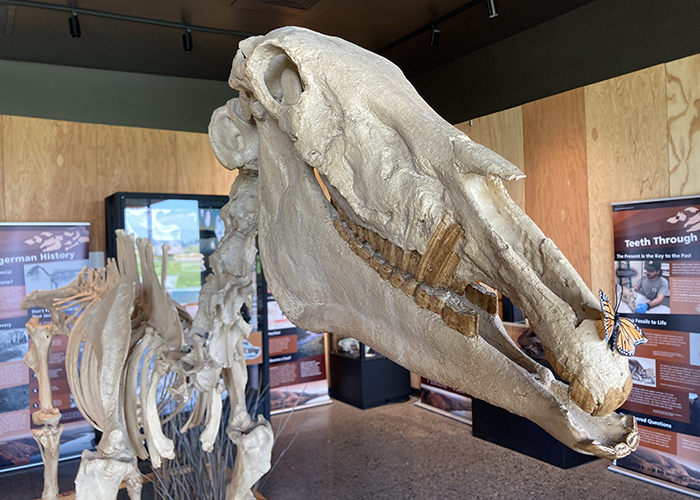 Previous Day |
New Meadows, ID → Hagerman, ID → Boise, ID 348.0 mi (560.1 km) |
 More 2022 Adventures |
Idaho, here we go, everyone!
Today, I’m wrapping up my tour of the Gem State with another early morning rise-and-shine to get back down to Boise, wander about, explore a national park site, and get back to the airport to catch my 7:45 flight! I’ve had much worse odds! Anyway, after wheeling my way back down from New Meadows, I arrived in Idaho’s capital city, an unusual place that’s pronounced boyss-ee by the locals and boy-zee by visitors! It was also one of the last cities before the end of the Oregon Trail!
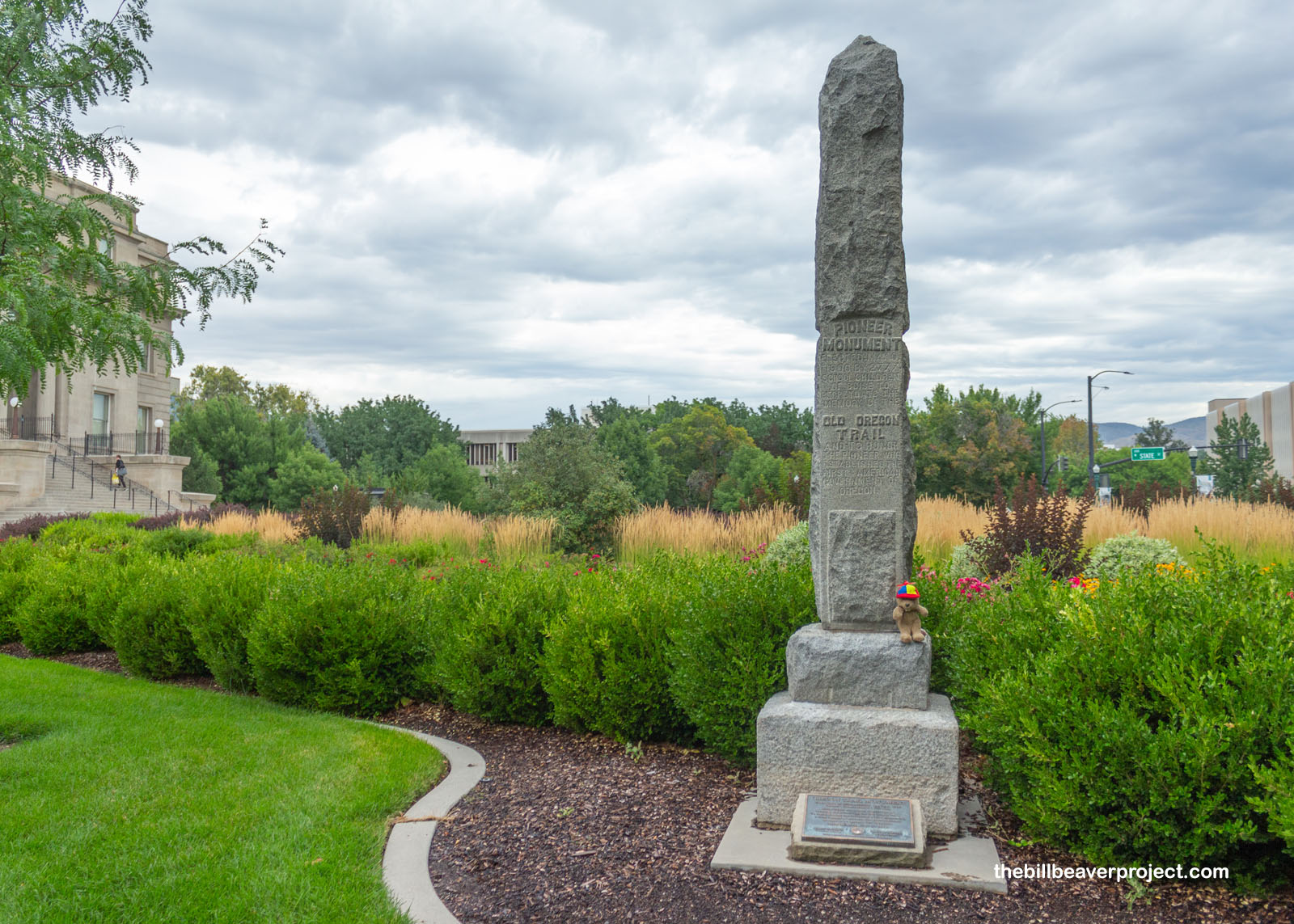 |
Once there, I took in the sights around my 34th state capitol building! Designed by John Tourtellotte, Idaho’s state capitol building was built to be uniquely Idahoan, with sandstone to match the sandy-colored hills behind it and lots of skylights to fill the space with natural light! Even though there wasn’t much natural light on a blustery day like this one, the capitol was no less remarkable! It’s also the only capitol in America that’s heated by a geothermal pool, some three thousand feet underneath it!
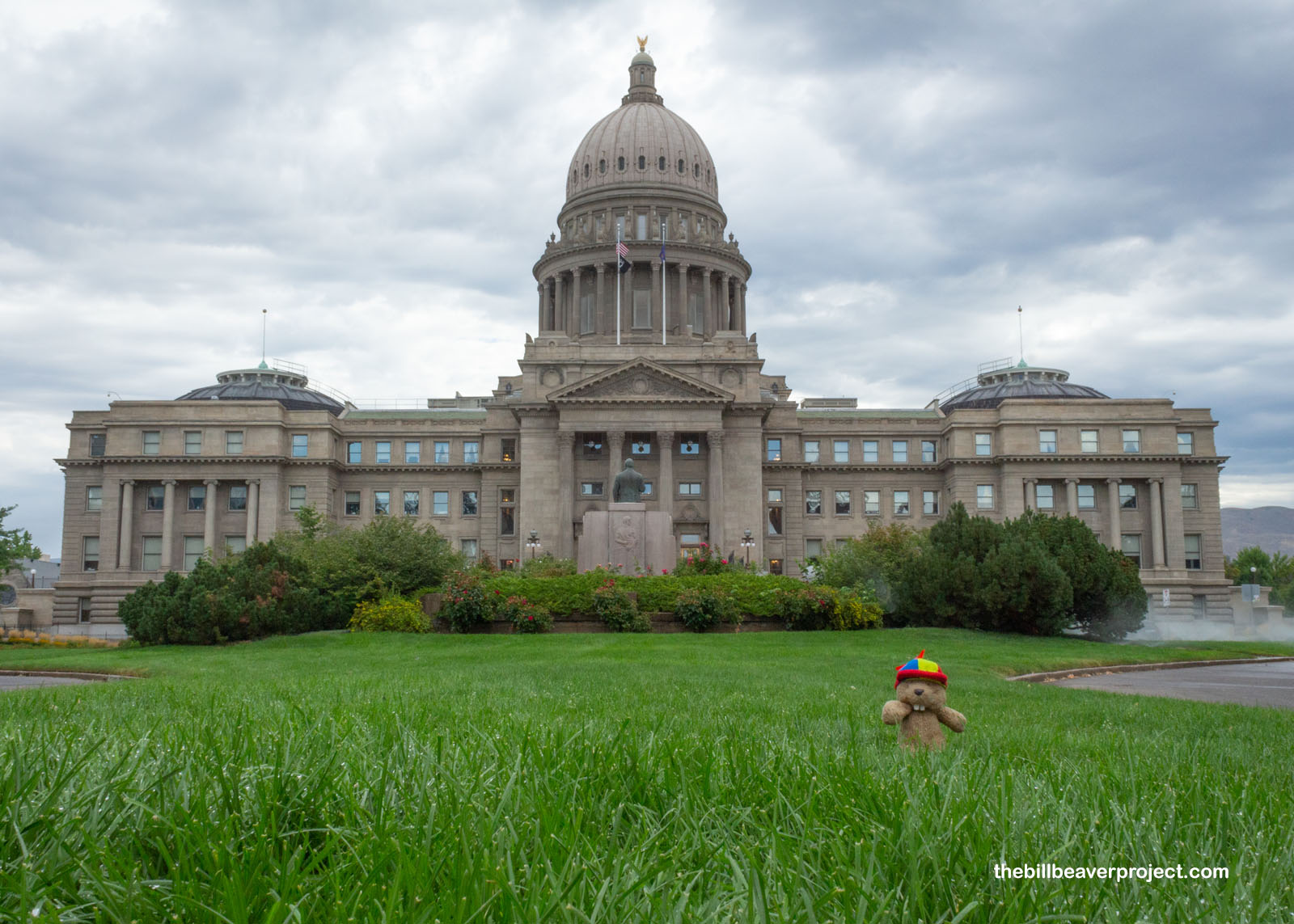 |
To be sure, Boise is also a capital city full of Odd Fellows, each with a connection to architect, John Tourtellotte! As you’ll remember from California, the Independent Order of Odd Fellows (I.O.O.F.) has its origin somewhere in the fog of English history, but was officially organized in the USA on April 26, 1819! An egalitarian group for fellowship and service to society, the I.O.O.F. set up shop here in Boise around 1900 and today boasts the only I.O.O.F. building for the local Chinese immigrant community! And the Rosedale I.O.O.F. temple is unique for its stonework façade and stepped Dutch gable!
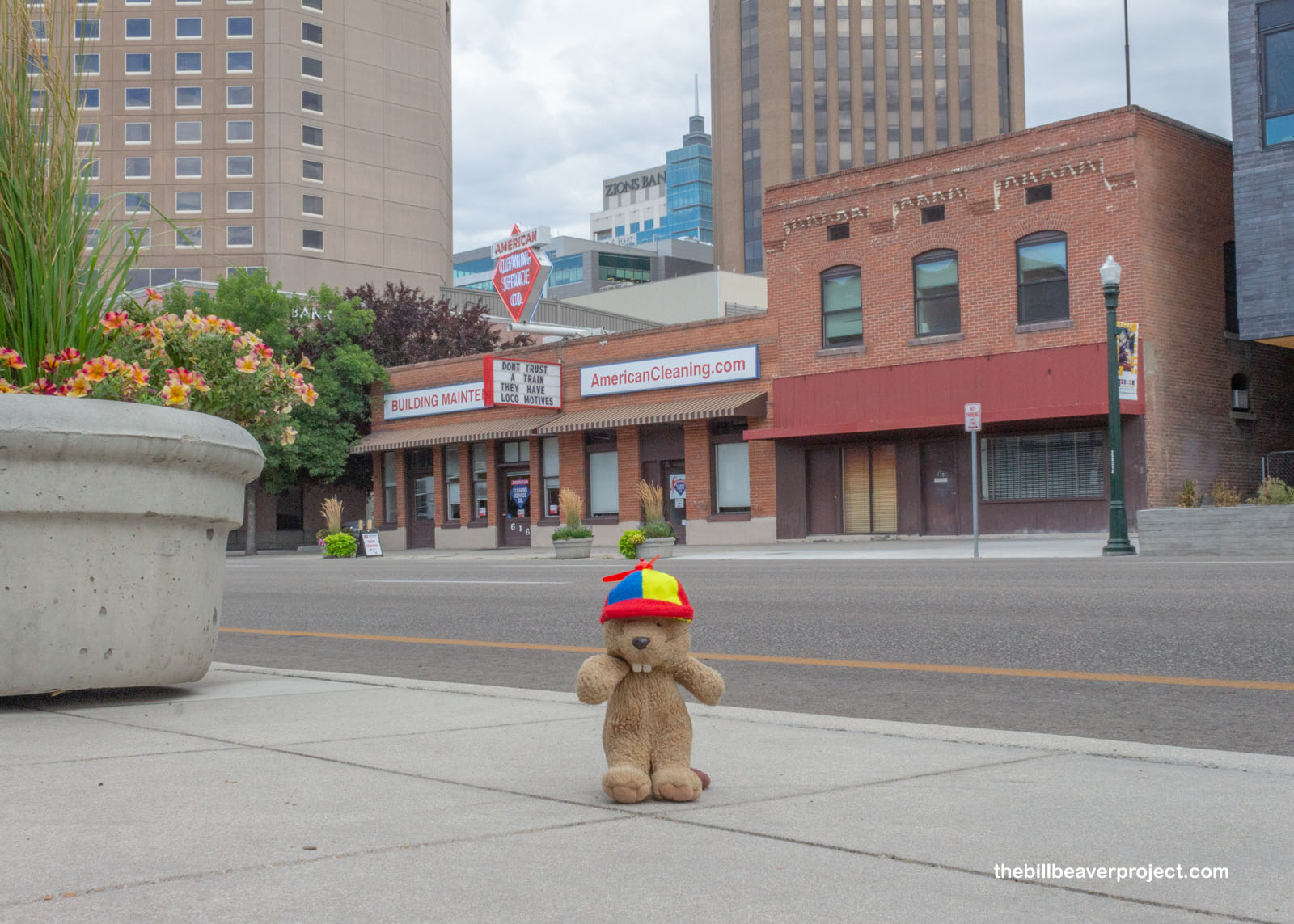 |
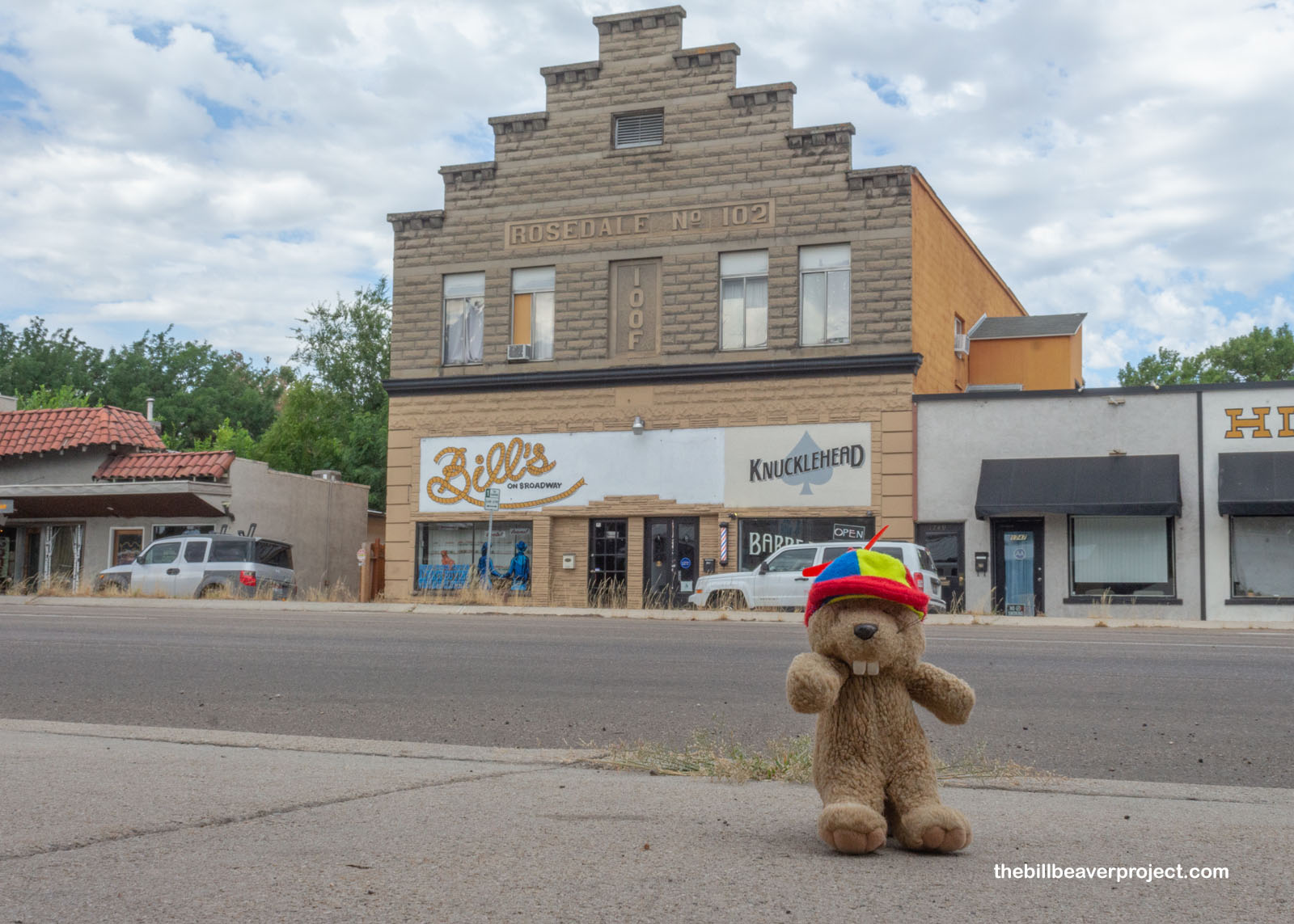 |
But I didn’t have too much time to dive deeply into oddness. My next stop was the newly renovated visitor center for the Hagerman Fossil Beds National Monument, my final fossil-themed NPS site! Only open since spring, this is the only place in this kind of odd park where folks can see fossils!
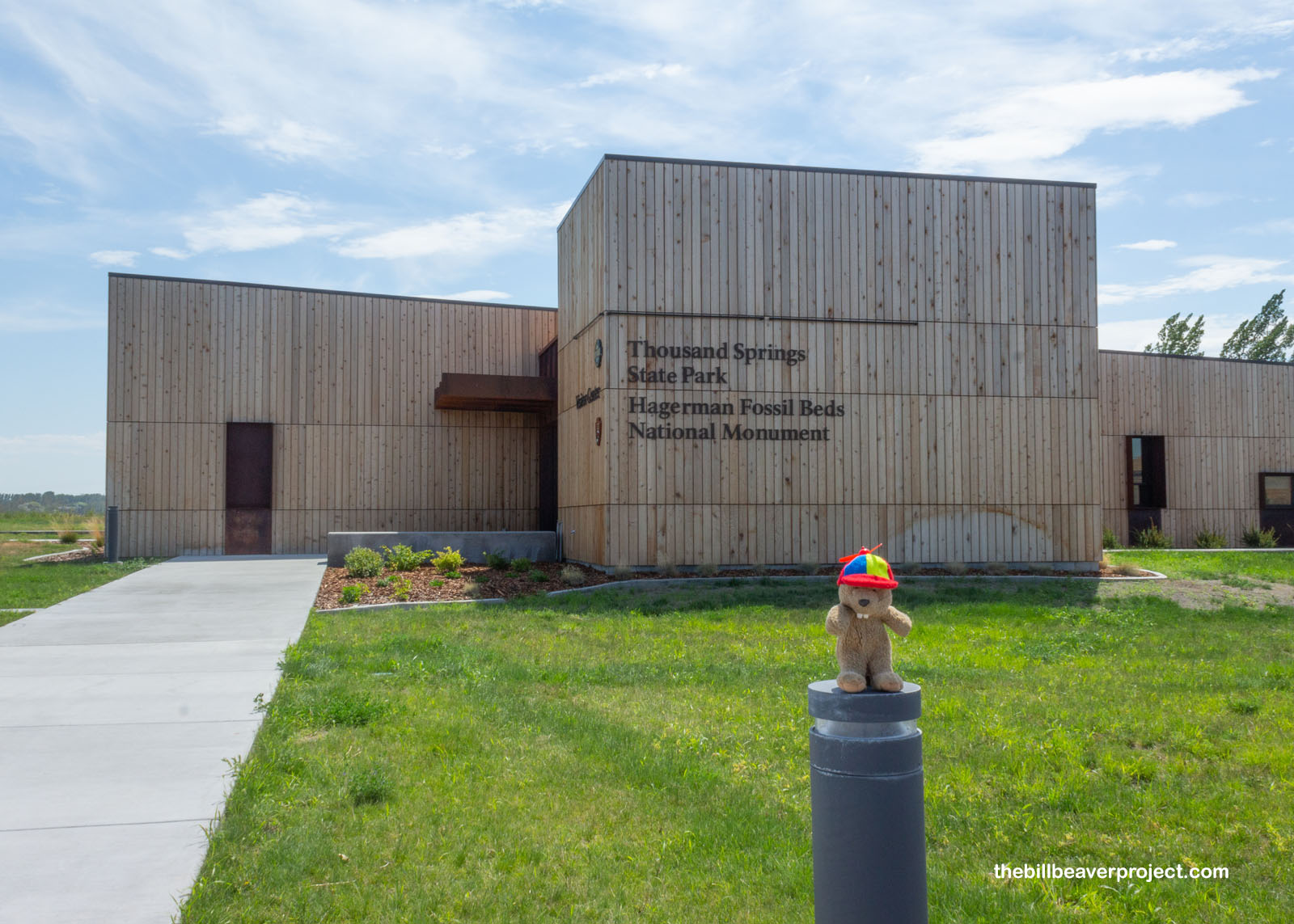 |
As you might guess, the Hagerman Fossil Beds take their name from a special fossil: the Hagerman horse (Equus simplicidens)! First excavated in 1929, over 200 remains of these early horses were unearthed by four Smithsonian expeditions led by Dr. J.W. Gidley! They’re named for the nearby town of Hagerman, which is why they’re not Gidley horses! These 55-million year old horses originated here in North America but over millennia migrated west into Eurasia and Africa, the ancestors of both domestic horses and zebras!
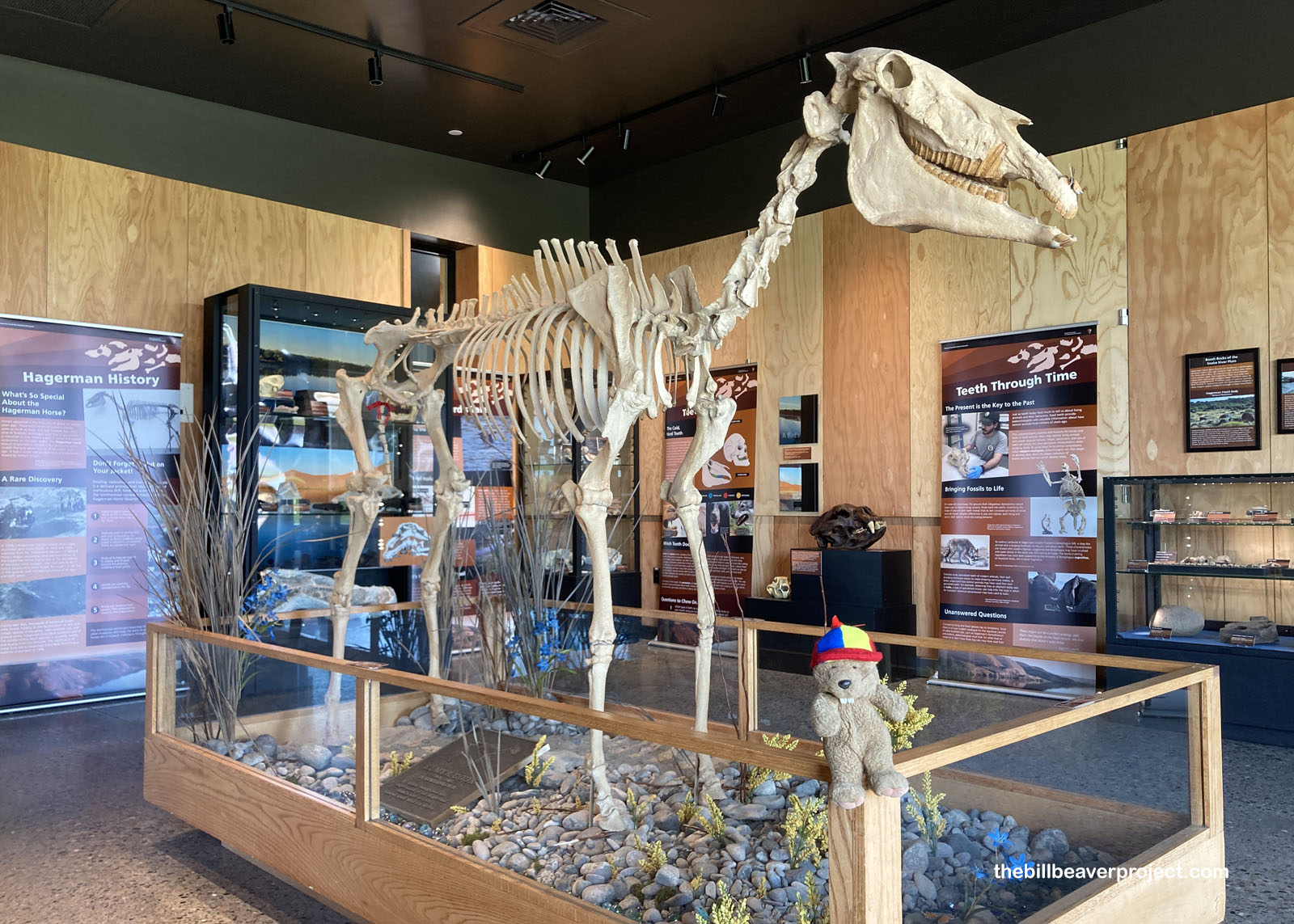 |
This spot along the Snake River is one of the richest Pliocene fossil deposits in the whole world! Apart from the horses, there have been ground sloths, mastodons, and saber-teeth dug up here, not to mention all the smaller critters and microfossils, numbering in the tens of thousands! It goes without saying that I was very impressed by the ancient beaver skull on display! For being the park’s main museum, though, I was surprised that this single room was the entire fossil exhibit.
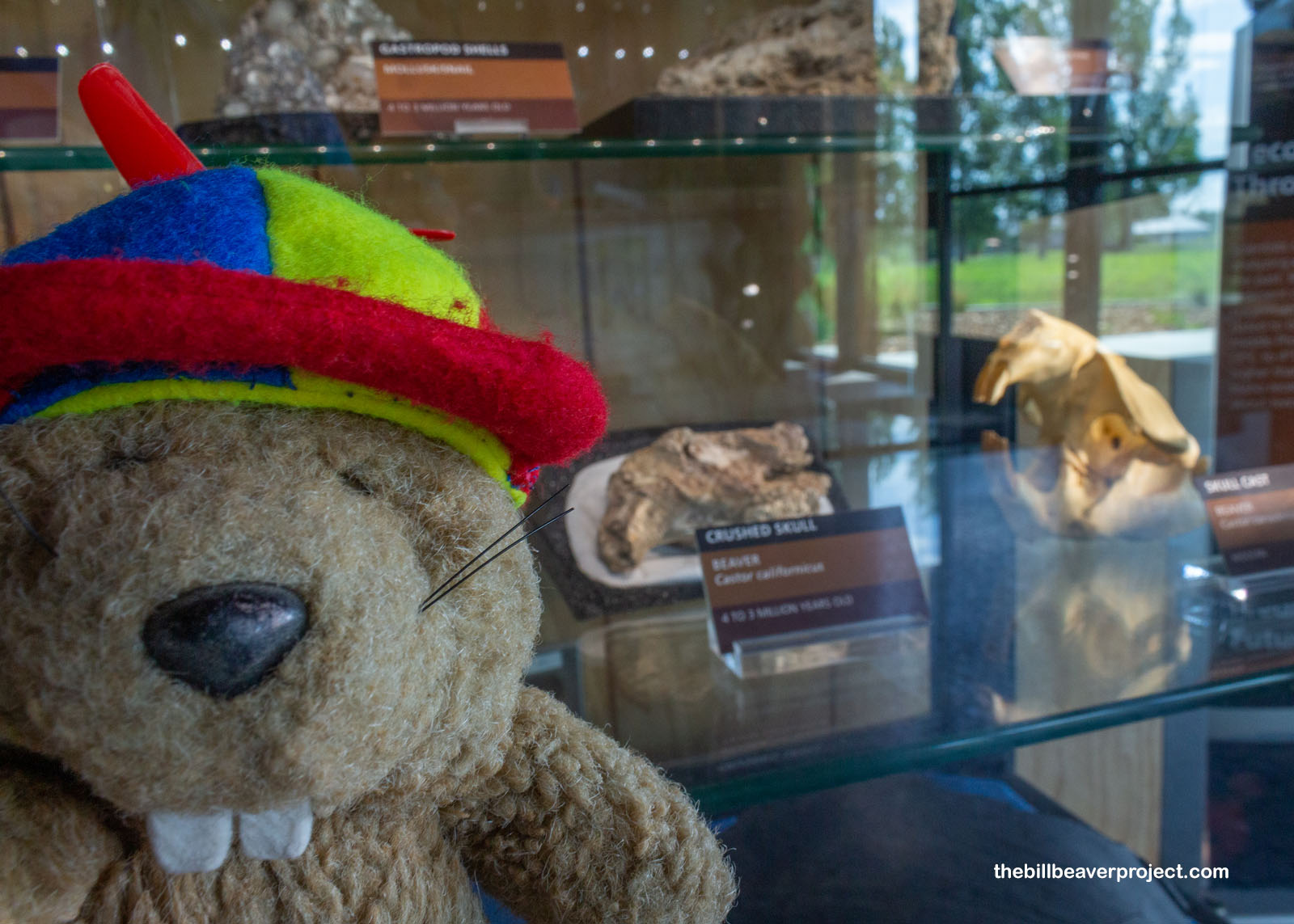 |
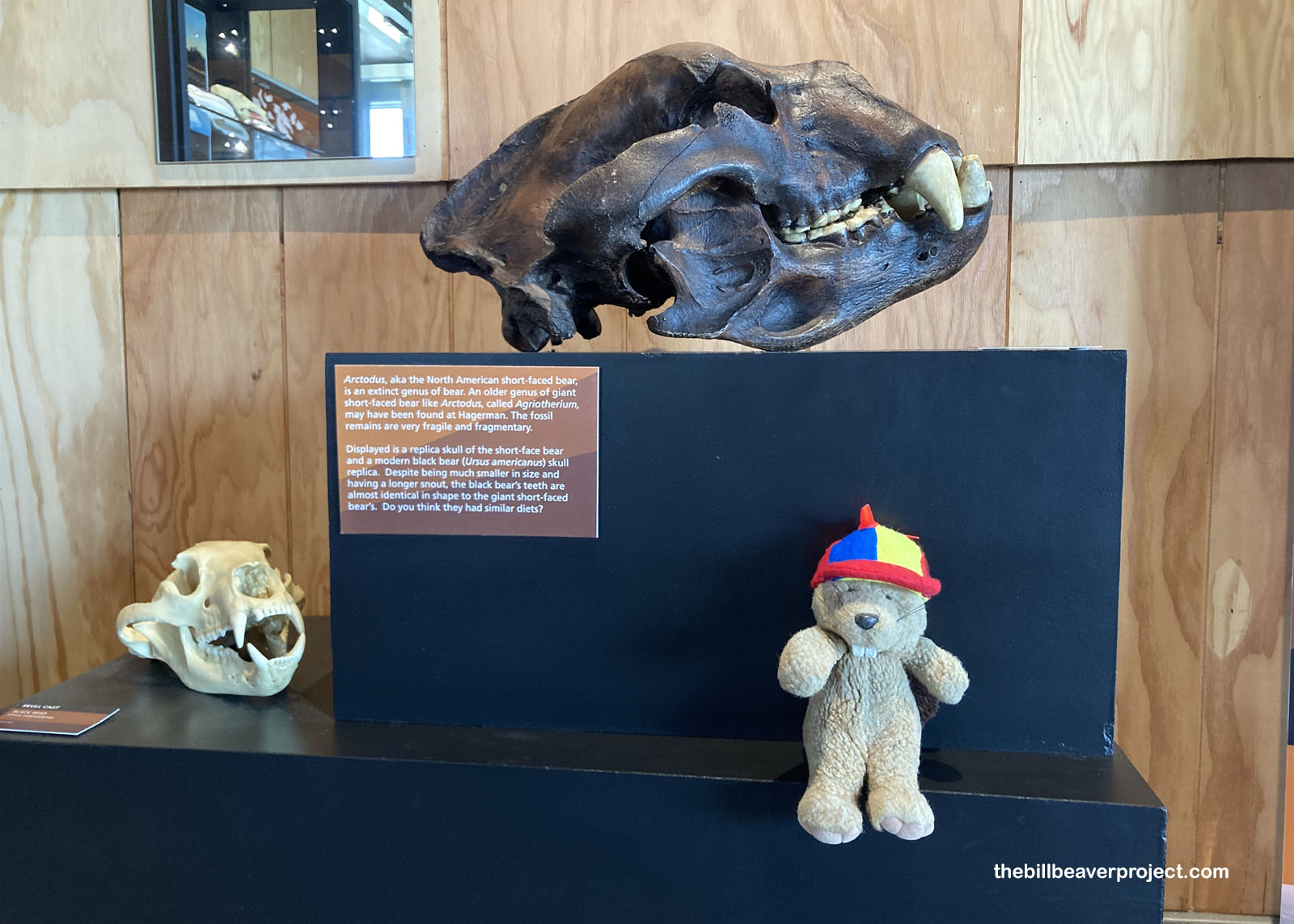 |
But unlike other fossil parks, such as Agate Fossil Beds or Dinosaur National Monument, the whole outdoor part of Hagerman Fossil Beds National Monument must be taken in from a single overlook at the Snake River. Those hills in the distance are the main fossil beds! This river is believed to have flooded at some point in the ancient past, washing a whole herd of horses into the same place, which might be why there are so many in one place! Being stuck at a single overlook means, naturally, that I had to whip out the Flutter Phone and get some panoramas at the Snake River Overlook!
This park is also situated along the original Oregon Trail route, interpreted just up the road from the Snake River Overlook! Looking down over rugged terrain, it was easy to see how so many could have gotten discouraged, and how happy they must have been to see the Snake River, their first access to fresh water after many, many miles! Because of the river, a number of them cut their trips short and settled here, putting them at odds with the Shoshone, Bannock, and Paiute tribes, as was the case with the Nez Perce up north. Like the horses, humans sure did pile up here too!
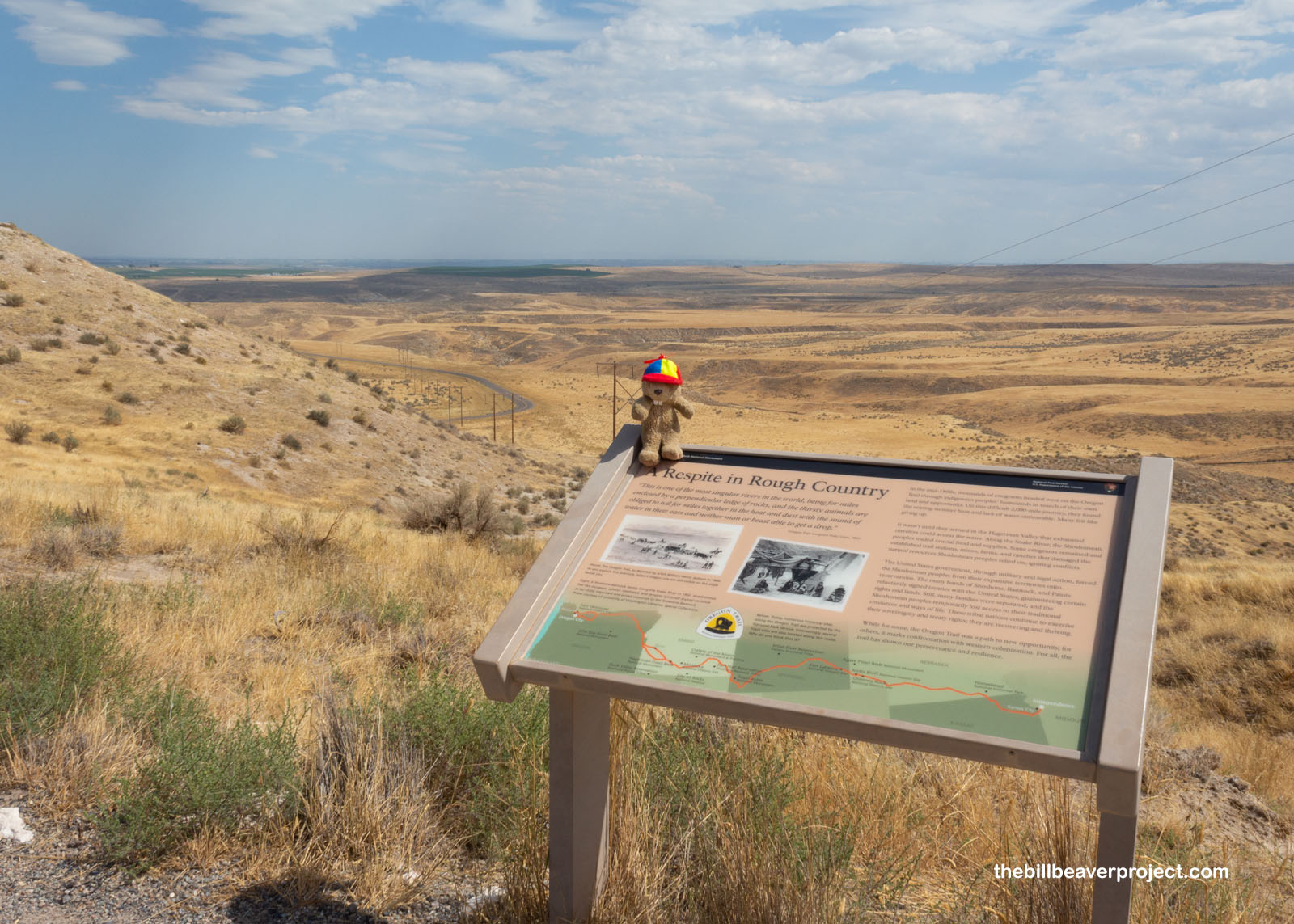 |
There were more signs amid the scorched grassland, which was swarming with grasshoppers! One talked about how scientists measure ages by layers of fossils, sediment, and the ash from volcanic eruptions! The other discussed how artists create colors and textures when they depict ancient critters whose only traces are bones! Then, that was all there was to see in Hagerman Fossil Beds National Monument, one of the super rare parks where I saw all there was to see. It left something to be desired, but plenty for the imagination!
 |
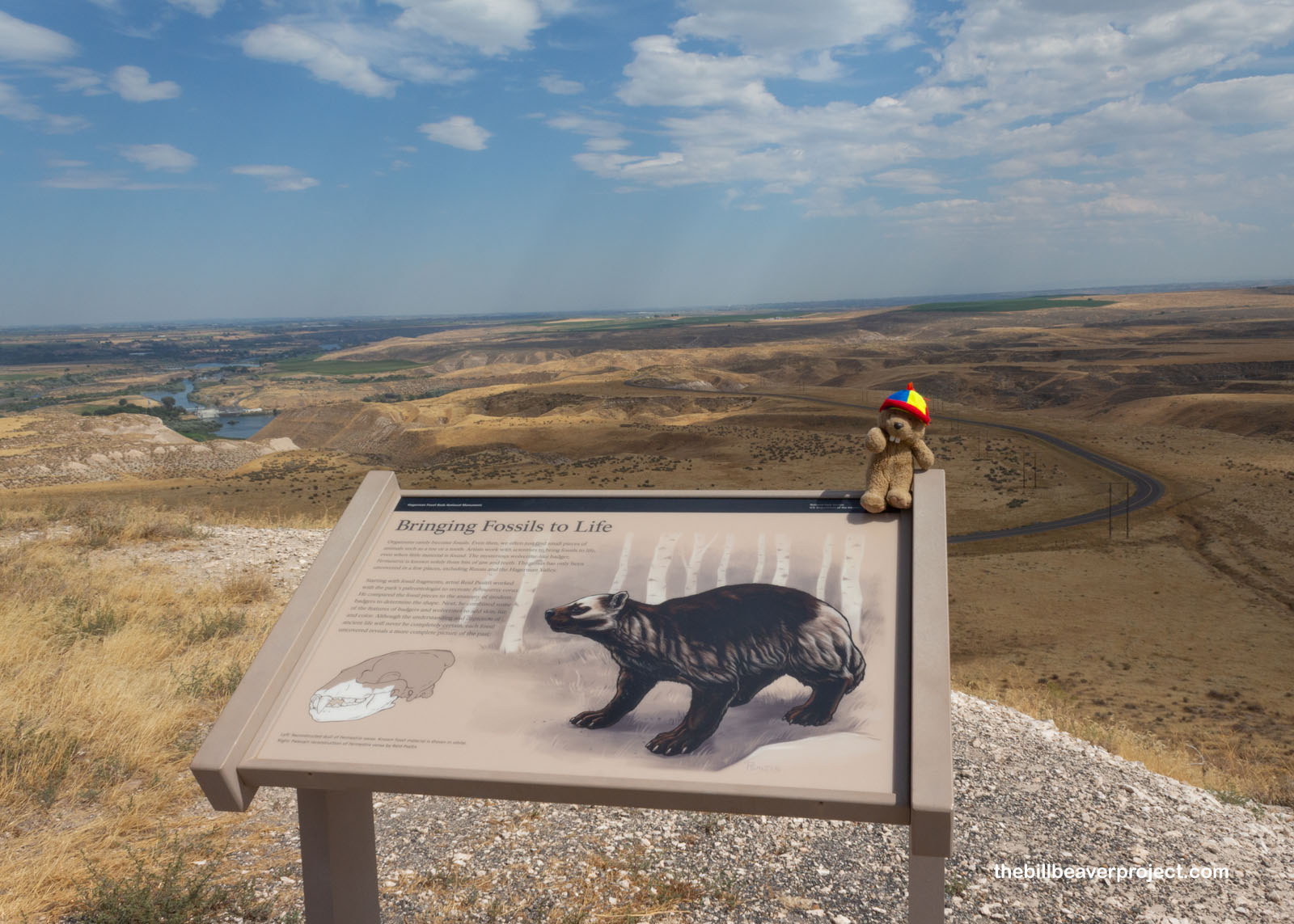 |
But what Idaho trip would be complete without a mention of potatoes?! Even though there’s a shortage this year, thanks to last year’s crazy heat wave, spuds have been inseparable from the Gem State since at least 1860! After winding my way along rugged dirt roads instead of backtracking to the freeway, I arrived at what must surely be the biggest potato in the world, the Big Idaho Potato Hotel! Built in 2012, this towering tuber spent seven years touring the country with Chris and Sharolyn Schofield to commemorate the 75th anniversary of the Idaho Potato Commission! Today, it’s been converted into a tiny-home style hotel that visitors to southern Idaho can book for a night under the starch!
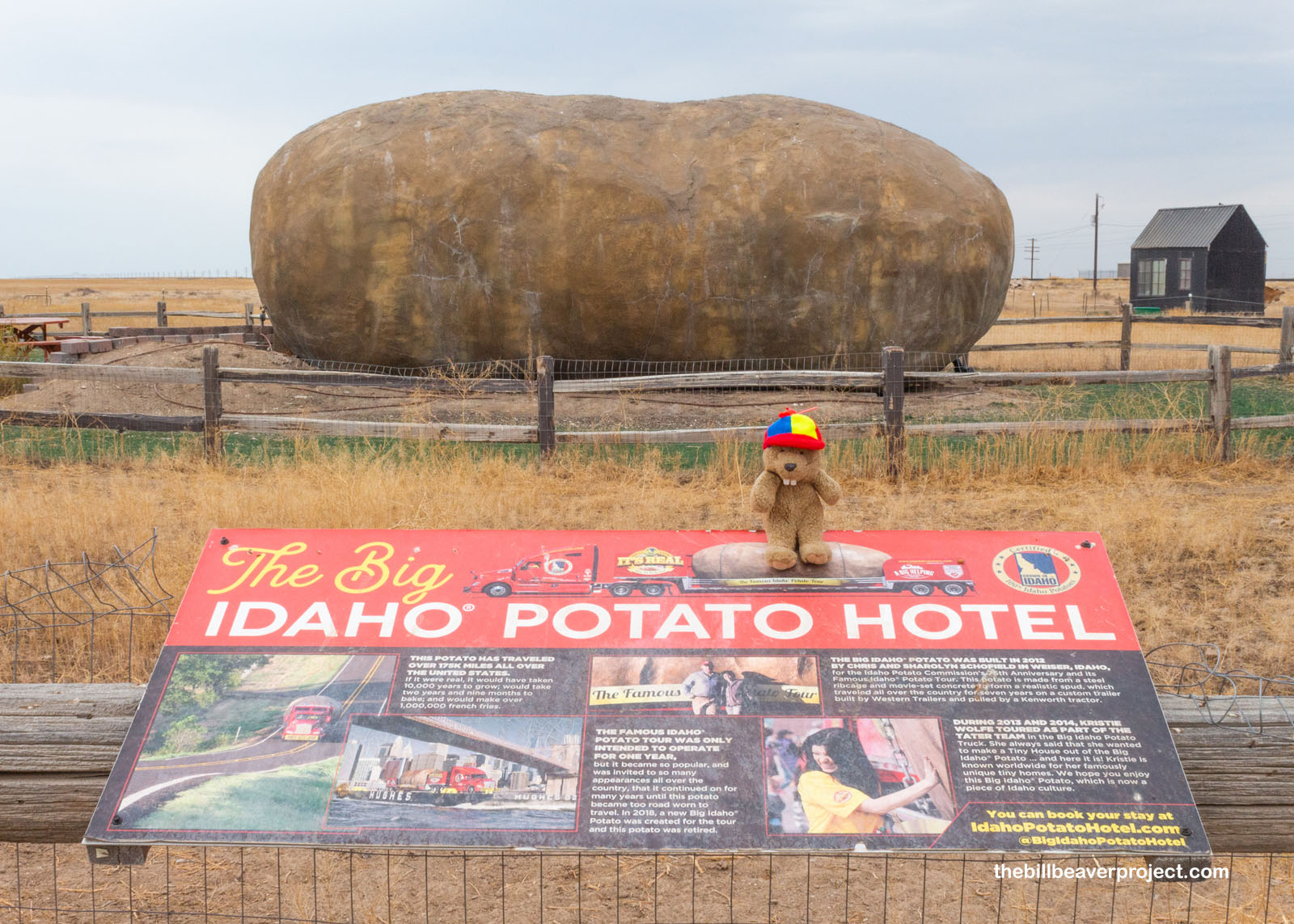 |
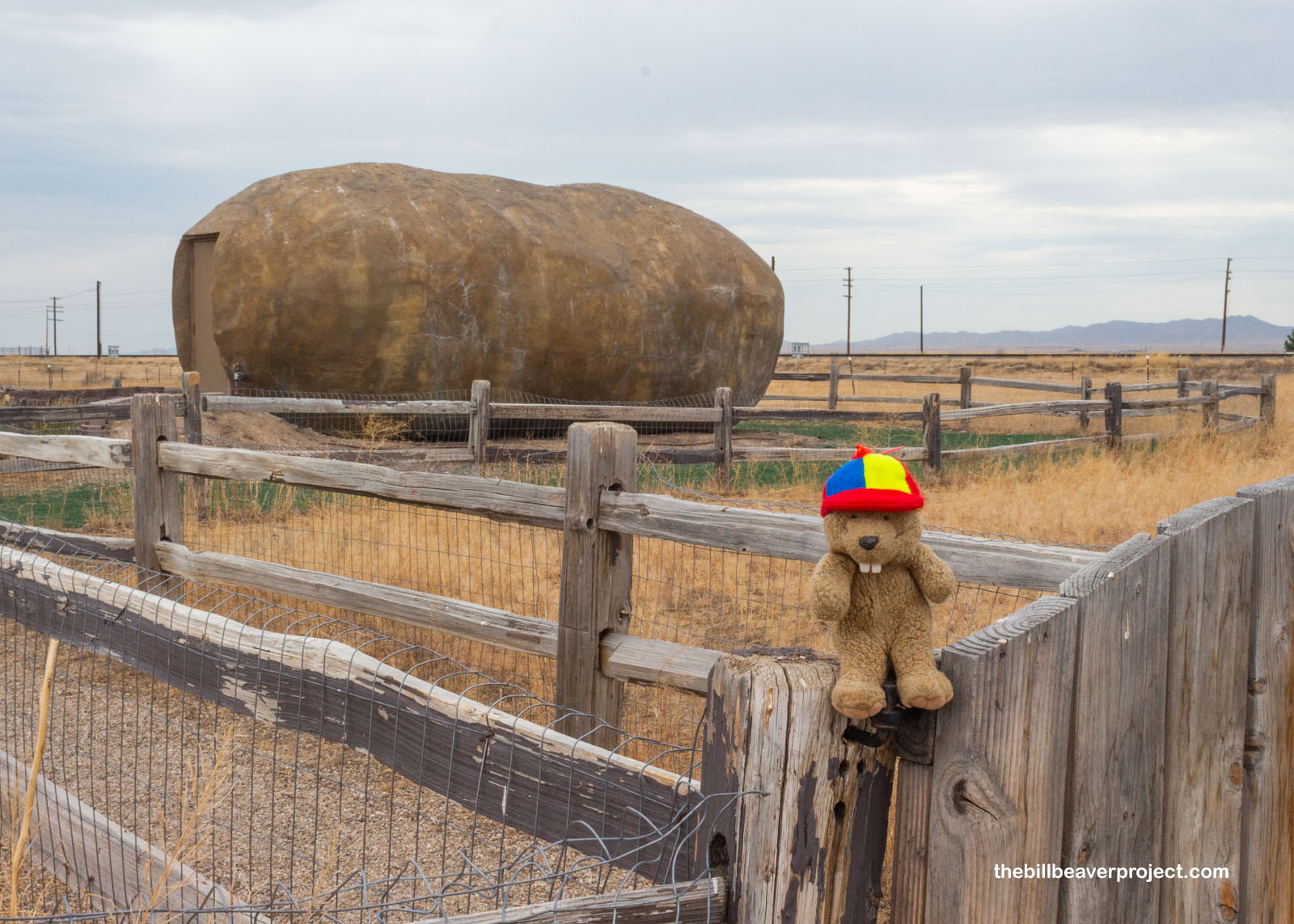 |
The storm that had been building over Boise all day was starting to turn drizzly, not as strong as the one that stranded me in Charlotte, but enough to get me hustling to the airport. I’d rather be stuck at the gate than watching the plane fly away from the parking lot after all! That concludes my exploration of Idaho’s national parks. Now to decide where to explore next!
Catch ya tater!

 Previous Day |
Total Ground Covered: 773.0 mi (1,083.1 km) |
 More 2022 Adventures |
